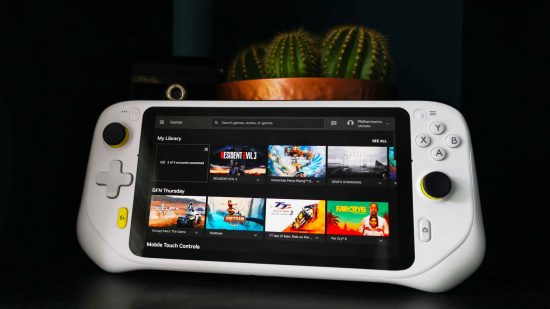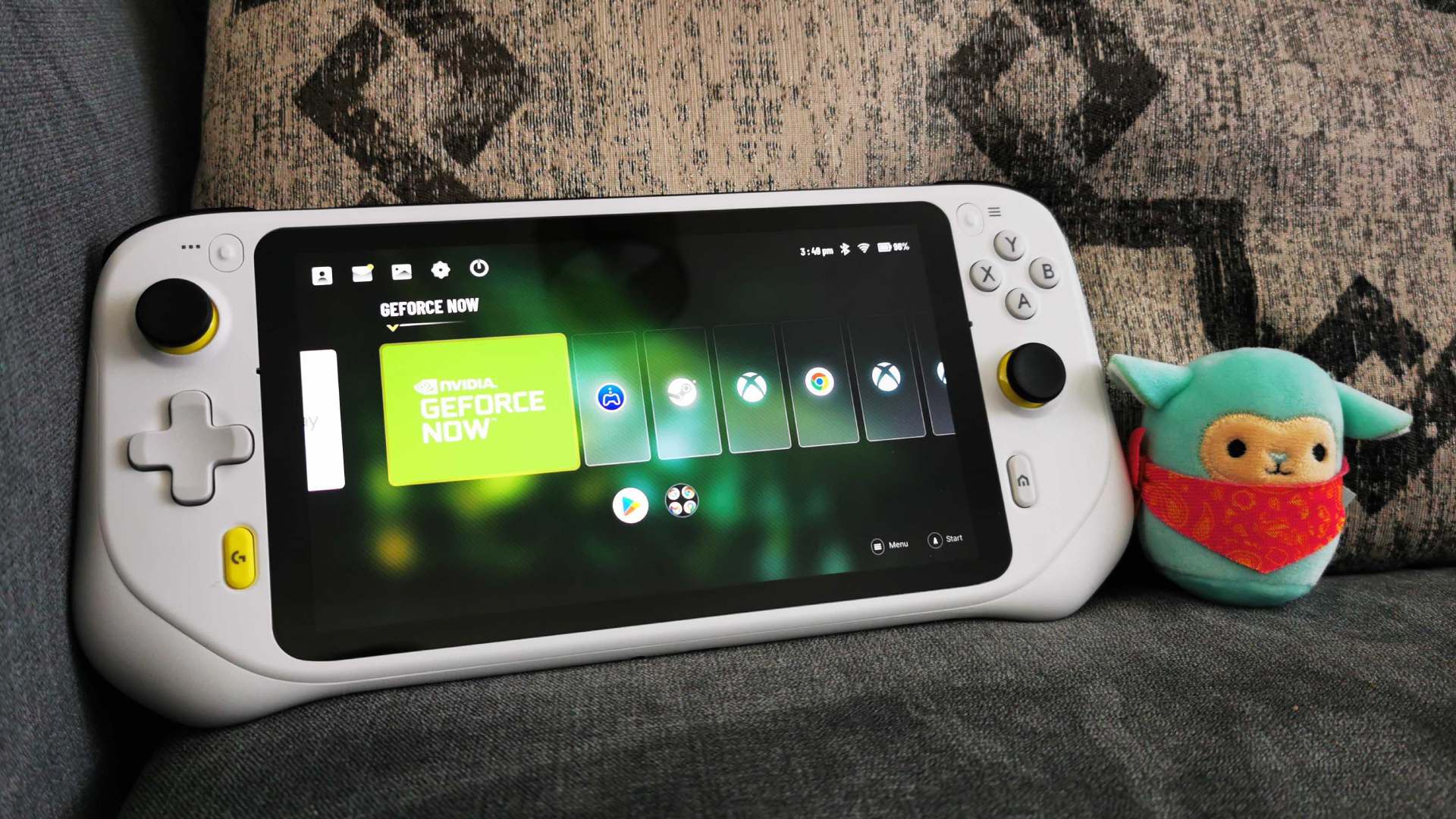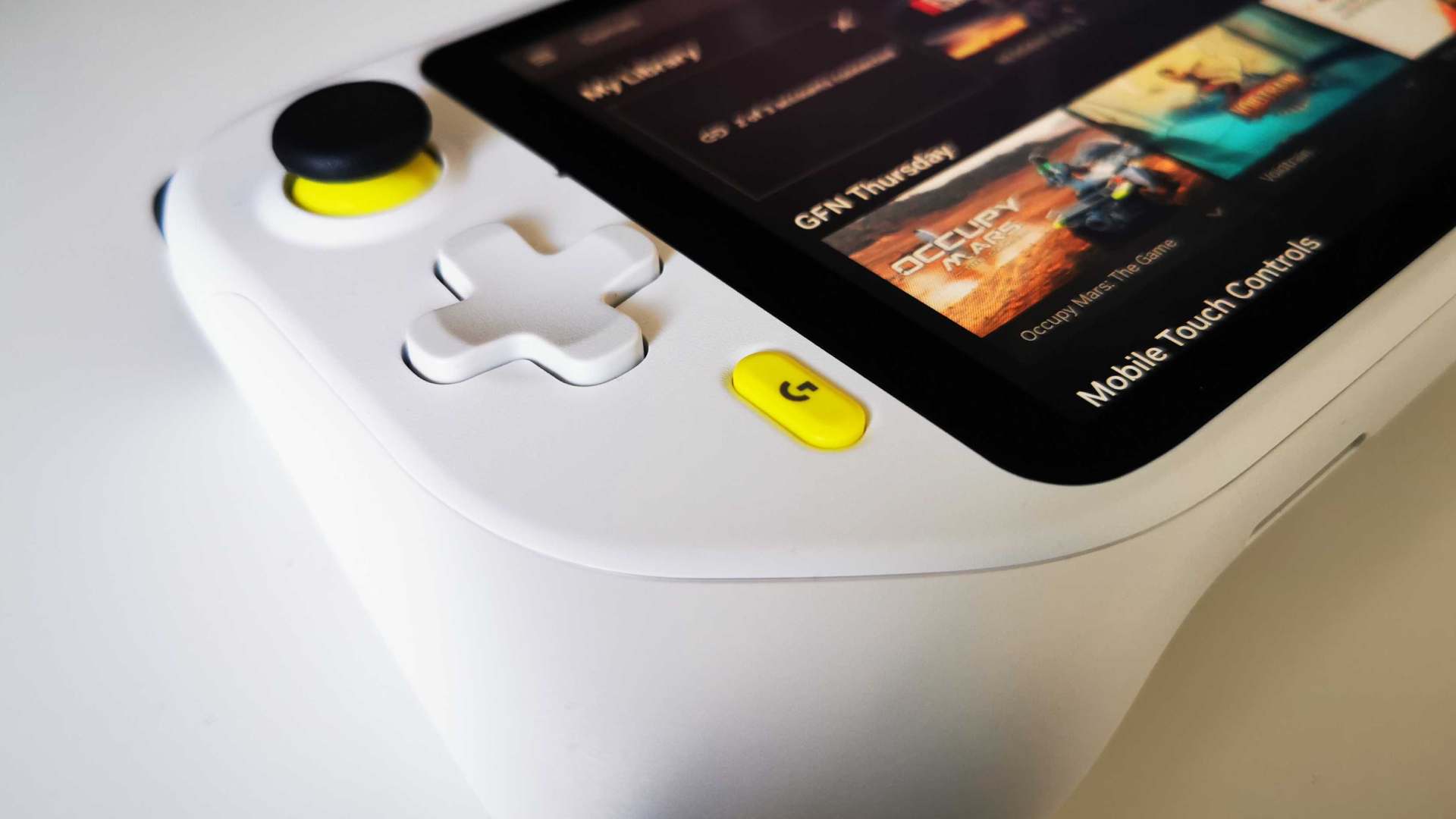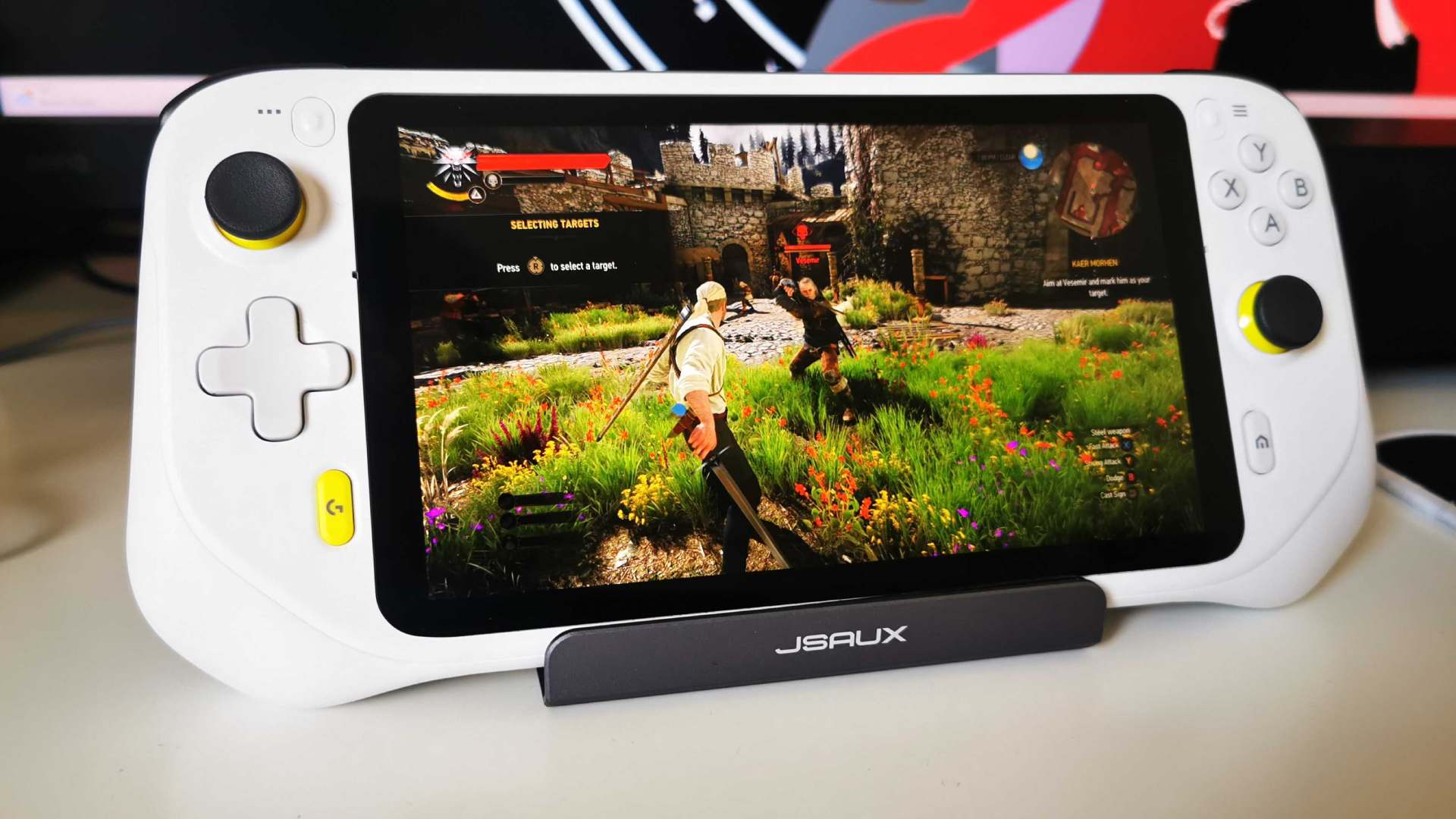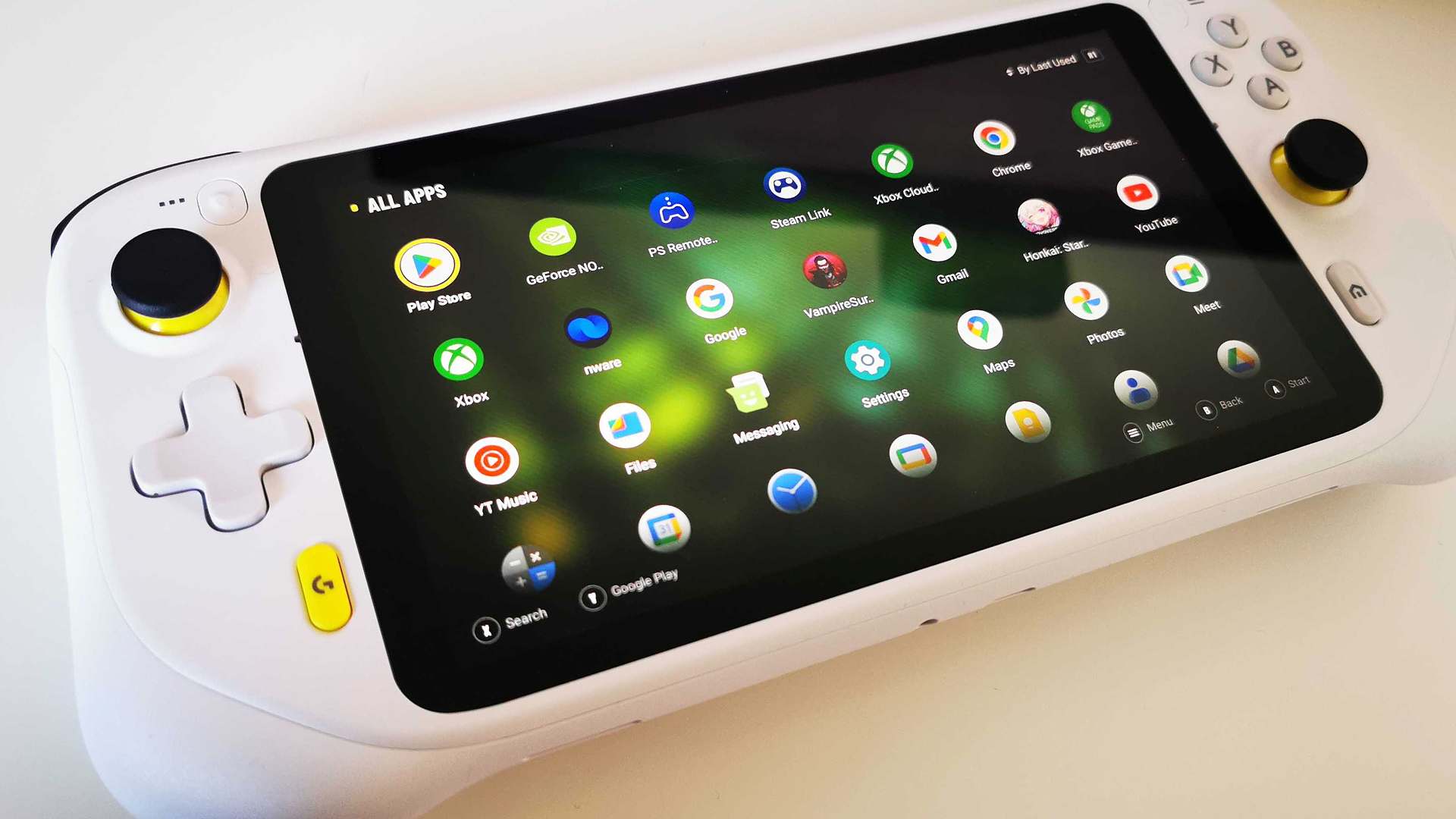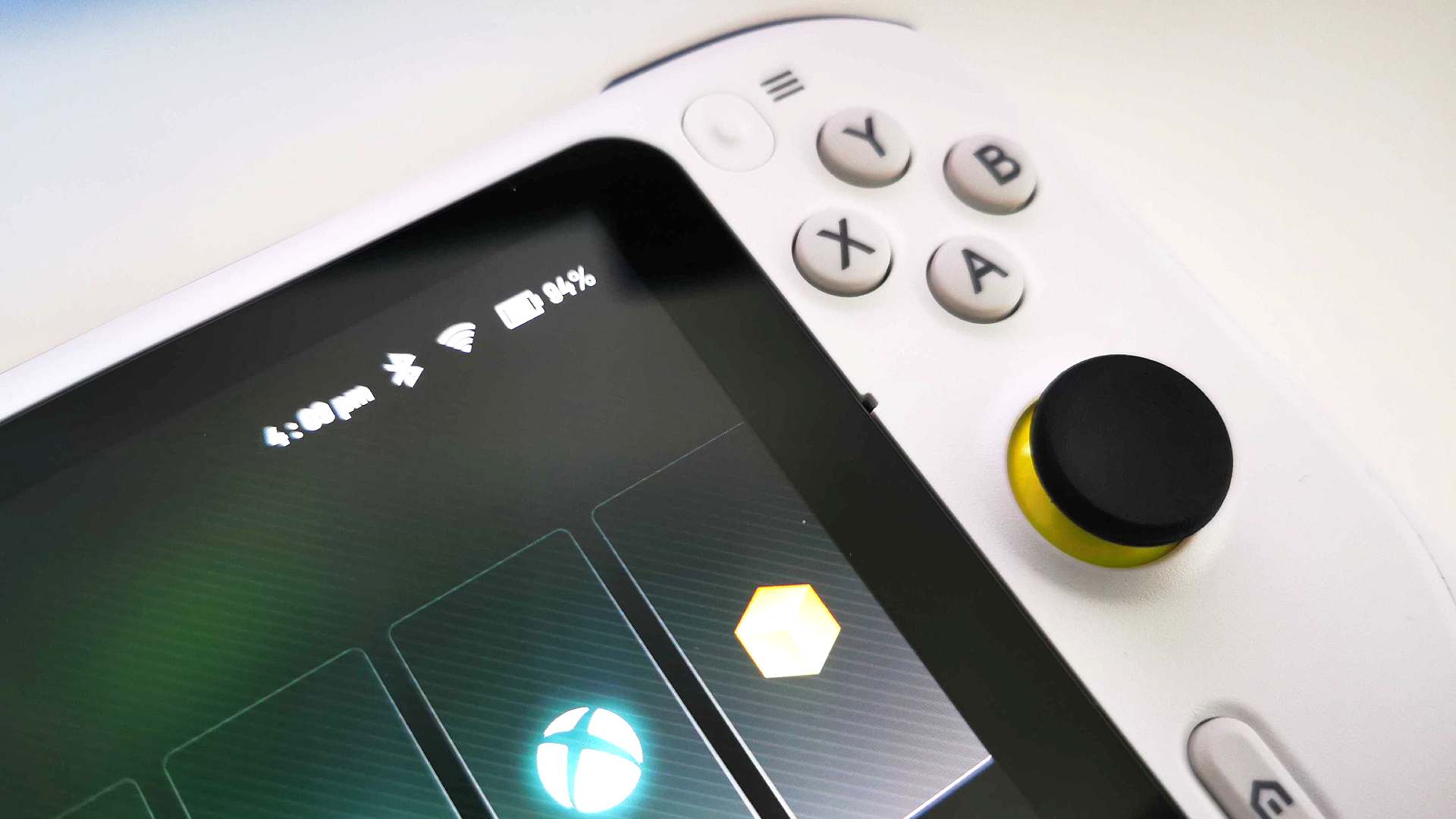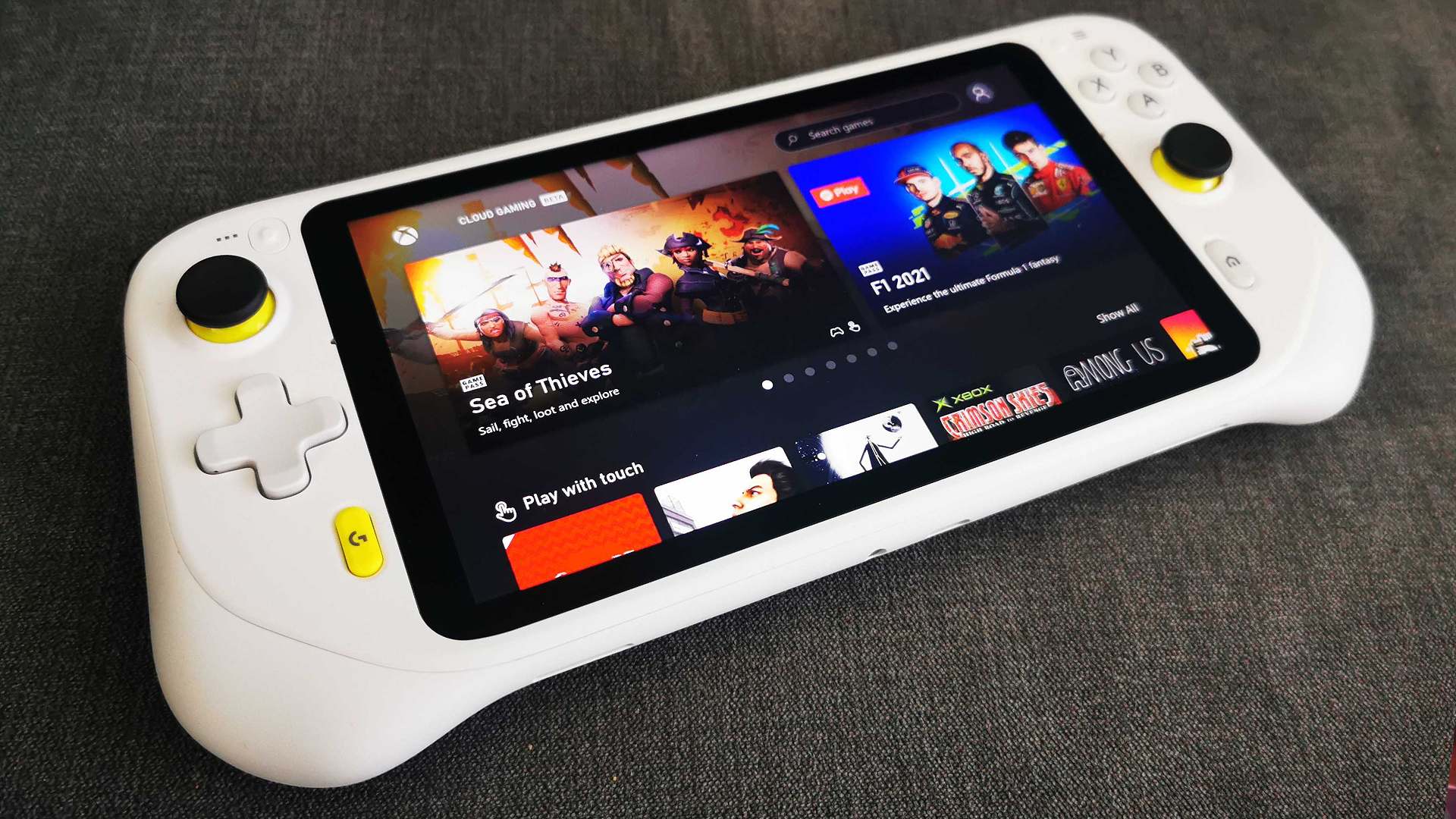Our Verdict
The Logitech G Cloud helps streaming services like Nvidia GeForce Now shine, but its price sends it crashing back down to earth.
The title sort of gives it away, but our Logitech G Cloud review takes a look at something that isn’t PC gaming hardware. That’s not to say it won’t appeal to some enthusiasts out there, as the device is a testament to how far game streaming has come since the dark days of OnLive. That’s largely because it showcases just how bright services like Nvidia GeForce Now can shine, but there are multiple reasons why the device won’t be replacing my Steam Deck any time soon.
At $349.99 / £329.99, the Logitech G Cloud is anything but cheap, especially when you consider alternatives both on the console and handheld gaming PC market. I’m not saying you should rush out and buy an Asus ROG Ally just to play a few games at night when you should be sleeping, but even the Nintendo Switch OLED costs less than this cloud-powered contraption.
Despite this, there’s a lot I really like about the Logitech G Cloud, and streaming shenanigans allows it to pull off things Valve and Asus can’t achieve with native hardware. It might be something of a one-trick Pegasus, but if you place that and the expense to one side, it’s potentially one of the best ways to play Nvidia GeForce Now games.
To help you navigate the skies of our review, I’ve included a few handy shortcuts that link to specific sections:
Logitech G Cloud specs
Armed with a Qualcomm Snapdragon 720G and a pocket full of dreams, the G Cloud shares more similarities with an Android tablet than a handheld gaming PC or console. Of course, that’s entirely on purpose, as Logitech has picked efficient specs that carer directly to cloud gaming, rather than handling things natively.
| Logitech G Cloud specs | |
| Processor | Qualcomm Snapdragon 720G |
| Cores / Threads | 8 |
| Graphics | 12 RDNA 3 CUs |
| RAM | 16GB LPDDR5 |
| Display | 7-inch IPS 1080p 60Hz |
| Storage | 64GB (ROM), microSD |
| Weight | 608g |
| OS | Android |
| Price | $349.99 / £329.99 |
Internal chip gubbins aside, the G Cloud also boasts a 7-inch 1080p IPS display, Bluetooth, stereo speakers, and a microSD card slot. All standard for a handheld in 2023, but the latter expandable storage is slightly amusing given that you won’t really be downloading any games to the device. I mean, you can download apps via the Google Play Store, but there’s a lot to be desired performance-wise.
Logitech G Cloud features
In a way, less is more when it comes to the G Cloud, as Logitech has created a portable that completely avoids two handheld cardinal sins – reduced battery life and fan noise. Since the device leaves the heavy lifting to streaming services and your internet connection, there’s no need for power-guzzling APUs and cooling systems. In turn, that means the G Cloud is completely solid state, which provides it with a pleasingly thin chassis, reduces its weight to 463g, and facilitates a fan-free experience.
The G Cloud also uses Android, accompanied by a custom console-like UI that bears resemblance to the Switch. Logitech has partnered with companies like Nvidia, Microsoft, and Valve to ensure services like GeForce Now and PC Game Pass Ultimate are (almost) good to go out of the box, but you can theoretically download any app you like from the Play Store.
Naturally, the G Cloud’s very selling point doubles up as its greatest pitfall, as it relies on those additional services and your at-home broadband connection. Simply put, if you’re already signed up to a bunch of cloud subscriptions and you aren’t planning on venturing outside, Logitech’s handheld will check most of the boxes. Looking for something to take outside or on a train, plane, or any other type of automobile? You’re fat out of luck.
Logitech G Cloud design
Logitech knows a thing or two about hardware design, and the peripheral maker really shows off its moves with the G Cloud. While the handheld’s sticks and buttons follow a fairly standard blueprint, the device nails things on the aesthetic front. The combination of matt white accented by hints of yellow and black banding gives the portable its own personality, and its curvy form factor pulls off being playful while avoiding cheap and/or childish vibes.
Again, Logitech might be new to the portable console scene, but it knows how to put together a controller. The G Cloud’s sticks visually remind me of one of my favorite gamepads, the ‘Cordless Action Controller’ for PlayStation 2, which I still use to this day. Of course, Logitech improves upon its legacy with a greater emphasis on tactility, as the menu and shoulder buttons use clicky switches rather than membranes.
I can’t believe I’m about to say this since I dunk on the Steam Deck for how wide it is a lot, but I think the G Cloud could be doing with a stretch. I’m a big fan of its asymmetrical layout, but the face buttons could be doing with some space off to the right. The ‘A’ button in particular is slightly obstructed by the stick below, meaning you’ll potentially have to angle your thumb differently.
The G Cloud’s triggers could be doing with a bit more of a lip, as they are fairly narrow compared to other gamepads and handhelds. I wouldn’t say you’ll suffer while playing FPS games, but the Steam Deck’s triggers are superior in terms of both feel and form factor. That said, Nintendo’s JoyCons sort of commit the same sin, so I guess it’s a necessary caveat if you’re aiming to keep things trim.
Logitech G Cloud performance
Normally, I’d reserve this part of the view to bang on about benchmarks, but that’s not possible with the Logitech G Cloud. Instead, I’ll give a rundown of my experience using the portable’s core services in addition to whether I could see the cloud strings attached. Ultimately, that narrows things down to how the handheld handles Nvidia GeForce Now, Xbox Cloud Gaming, and Steam Link.
Let’s kick things off with the best of the bunch, GeForce Now. The GPU giant’s Ultimate package uses an Nvidia RTX 4080 in a far-off land to deliver premium PC performance over the net, and it’s a sight to behold on the Logitech G Cloud. Sure, portable play is still limited by that 1080p screen, but you’ll be able to max out settings in games like The Witcher 3 without any notable frame dips or issues. Even on the lower resolution display, the experience is pretty incredible, and it visually exceeds what is remotely possible using native hardware.
Unfortunately, the same can’t be said for Xbox Cloud Gaming, which you can access on the G Cloud using your PC Game Pass Ultimate membership. If you’ve ever dabbled with similar services in the past, you’ve likely picked up on compression and artifacts associated with streaming, and they’re all present within Microsoft’s take. Don’t get me wrong, being able to play anything from Forza Horizon 5 to the classic Blinx: The Time Sweeper instantly on a portable is a huge boon, but it pales compared to what Nvidia can deliver via GeForce Now.
Using Steam Link on the G Cloud is also an option, and it’ll let you access your PC collection using your own rig and network. The last time I dabbled with the app feature was when the physical TV device released way back in 2015, but I figured perhaps things had improved since then. Sadly, my experience was largely the same, laced with intermittent lag and stutters that I was unable to resolve. Your mileage may vary depending on your at-home setup, but I used a Gigabit broadband connection during testing, so take from that what you will.
As an added bonus, I decided to try running the mobile version of Honkai Star Rail on the G Cloud, just to see whether it’d hold up against the PC version. The result? Well, that Snapdragon 720G processor isn’t really up to the job, and even the pretty Interstellar train menu background chugged away. I wasn’t able to check precise frame rates, but it’s safe to say it was running below 30fps most of the time.
Logitech G Cloud software
I’ve already touched on the performance side of the G Cloud’s software, but I’d like to flesh out my thoughts in terms of functionality. For the most part, using each app on Logitech’s handheld is straightforward, and that custom Android UI ties everything together nicely. However, I wouldn’t say things are seamless, as jumping in and out of the likes of GeForce Now sometimes prompts the app to restart, which is a bit of a nuisance.
Perhaps I’m feeling spoiled after using the Steam Deck daily and testing the Asus ROG Ally, but I wish this cloud machine was able to collate games in a hub of sorts. This is something the portable PCs above do within their respective operating systems and apps, and I feel like it’d streamline the G Cloud’s approach cloud platform approach. Perhaps it’ll be a possibility in the future given that Logitech is partnered with said companies, but having to switch between services is a bit of a pain.
On that note, the Logitech G Cloud has already improved on the software front since its 2022 debut, as the device now supports virtual button mapping, analogue stick customization, and dead zone trigger options.
Logitech G Cloud battery life
At this stage, you might be wondering why you should buy a device that, in practice, functions more like a Wii U gamepad than a Nintendo Switch? Well, aside from it being much lighter than that former lovable failure, the G Cloud’s battery life is extremely attractive. I was able to squeeze around nine hours of playtime out of Logitech’s featherweight portable, and it felt weird given I’m used to reaching for my Steam Deck charger after around three hours or so.
Logitech G Cloud price
Everything else aside, pricing presents itself as the G Cloud’s biggest problem. $349.99 is a lot to ask for a device that requires additional paid services and a relatively decent broadband package, not to mention you’ll need an existing PC to access your entire Steam library.
If the G Cloud was able to undercut the likes of the Steam Deck and Nintendo Switch by a significant amount, it’d be easier to recommend the handheld as an accompaniment to your existing home setup. I’d even be inclined to point you towards it if it could handle high-spec mobile games, but testing proves that’s not one of the portable’s strengths.
Logitech G Cloud verdict
I want to avoid picking on the Logitech G Cloud for being a cloud-reliant portable, as I do think there are multiple benefits linked to ditching native hardware innards. I’d go as far as to argue that if you’re looking for a straightforward way to kick back and dabble with streaming, this handheld will cover all bases.
Sadly, Logitech’s pricing makes it a hard sell for the average user, and you’d need to be really committed to the cloud cause to justify the investment. After all, you can use GeForce Now on Steam Deck and other handheld devices, so what you’re really paying for is the company’s admittedly lovely hardware and custom UI.
Let me wrap things up by saying that, despite my price and functionality gripes, I’m glad the Logitech G Cloud exists, as the peripheral maker’s handheld debut holds promise. My biggest hope is that if streaming isn’t the future of gaming, the company will use the console as a blueprint to create a handheld contender (or potentially team up with Valve to create the Steam Deck 2, but that’s perhaps a bit out there).
